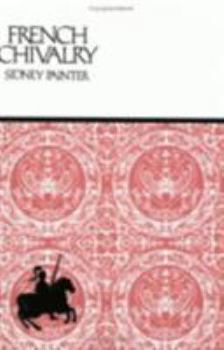French Chivalry: Chivalric Ideas and Practices in Mediaeval France
Select Format
Select Condition 
Book Overview
Originally published in 1940. Chivalry denotes the ideals and practices considered suitable for a noble. The word itself is reminiscent of the aristocratic society of medieval France dominated by... This description may be from another edition of this product.
Format:Paperback
Language:English
ISBN:0801490618
ISBN13:9780801490613
Release Date:October 1957
Publisher:Cornell University Press
Length:188 Pages
Weight:0.45 lbs.
Dimensions:0.5" x 5.1" x 7.7"
Age Range:18 years and up
Grade Range:Postsecondary and higher
Customer Reviews
1 rating
Fascinating Look at French Medieval Chivalry
Published by Thriftbooks.com User , 20 years ago
French Chivalry is superb. I have always enjoyed reading medieval history, and I have accepted that many texts are detailed and scholarly and require substantial effort by the reader. Well-researched and documented, French Chivalry is an exception. Anyone with a modicum of interest in the Middle Ages will have difficulty putting this book aside. Historian Sidney Painter writes with an engaging style that is both informal and scholarly. I read all 172 pages in two days.Painter has created a uniquely fascinating examination of French chivalry, contrasting the chivalric ideal with the actual practice of chivalry by French knights from about 1000 to the mid-1400s.There are only five chapters. The first chapter, The Nobles of France, portrays the French ruling class at the end of the first millennium as little more than undisciplined warriors. Painter examines the political, economic, and military factors that influenced the development of that remarkable code of behavior that we call chivalry.In chapter 2, Feudal Chivalry, Painter explores the ideals of chivalry that were most readily acceptable to French knights themselves - prowess in battle, loyalty, generosity, knightly courtesy, and love of glory.Chapter 3 (Religious Chivalry) and 4 (Courtly Love) describe how churchmen and ladies created and advanced their own distinct and rather contradictory conceptions of the perfect nobleman. Despite persistent efforts, the ethical ideals propagated by the ecclesiastical class met with limited success. The ladies did, however, persuade the warrior class to direct more attention away from the battlefield.The final chapter examines how the three somewhat mutually exclusive types of chivalry were reconciled. This story ends as the warrior knight is transformed into (or replaced by) the courtier, a man more concerned with entertaining and pleasing royalty than exhibiting prowess in battle.




